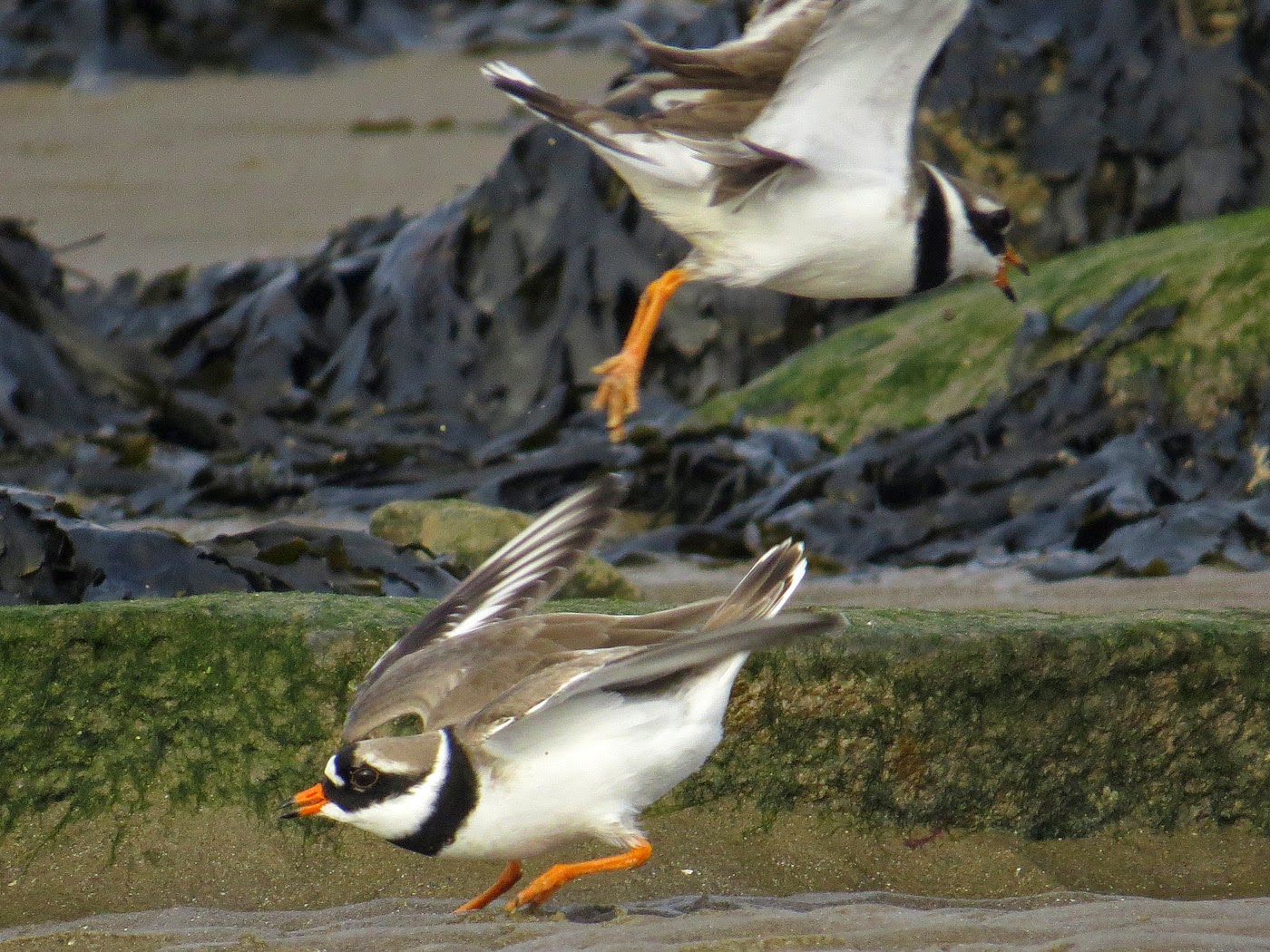I was invited to join a couple of ex work colleagues Geoff and Tim, they were off to Oare Marshes. It was a beautiful bright sunny day, we arrived just after 11:00am to coincide with high tide which usually pushes all the waders off the shore onto the reserve. The Environment Agency are doing some work there at the moment so the road was awash with mud and the car park busy with agency workers cars. Whether it was the huge dumper trucks plying up and down the road or some other reason, I'd not seen Oare with so few birds before. We had a reasonable species count but nothing like the numbers of birds I've seen whenever I'd been before.
Male Reed bunting
We walked along the sea wall but there was very little around, a few Greylag geese squabbling on the scrape and an occasional passing cormorant. The reed bunting (above) was searching for food amongst the grass, although he was quite close it was almost impossible to get a clean shot, there was always some grass or stem in the way. This and two distant Bearded tits were the highlight of the outward walk, although we could pick out most of the common duck species on the lake. The only waders there in any numbers were Redshank and Dunlin, there were a few Godwits, Avocets and Lapwing and that was about it.
Distant Dunlin
Whilst in the East hide I spotted a male Pintail fly up from the lake and land just the other side of the road, I knew there was a ditch there and a very small pond so I reckoned if it had landed in one of these it would be quite close to the road and could offer a 'photo opportunity'. I left the hide and got to the road as quickly as I could and sure enough there were two male and one female Pintail on the little pond - probably still ~30 meters away but in good light. I took a lot of very similar shots (although it is surprising that despite everything being pretty much the same for each photo, there are usually only one or two that catch everything just right - angle of the birds head, shadow cast by the bird or something else, sharpness etc). So I've learnt to take lots, it is easier to delete the unwanted ones than to go back for another attempt.
I was briefly distracted from the Pintail by a hovering Kestrel and although really just out of range I liked the action shot here. It's not that sharp and quite a heavy crop (the photo not the bird) but you don't usually see the legs dangling quite like this.
Squelching our way back through the liquid mud on the road we decided to move on. Geoff and Tim hadn't seen the Purple sandpipers or Mediterranean gull at Hampton so we called in there to have a look. Reliable as ever we soon found the Purple sandpipers they were with a dozen or so Turnstone in the section of Hampton beach where a freshwater stream empties out. Also there was a Dunlin which took us a little while to identify. To all three of us the initial views looked like the bird had a short, very pointed bill and not the longer and slightly down curved bill of a Dunlin, however, when a little closer we could see the bill more clearly and all agreed Dunlin.
Dunlin with Turnstone bathing in fresh water at Hampton
That just left the Med gull, there were 50 or 60 BH gulls and a few Common gulls out on the water and on the beach, I'd scanned them earlier but couldn't see the Med gull. Seconds after Geoff had said "So where's the Med gull?" or something similar, I spotted it on the water. Once seen it is fairly obviously different to the winter plumage BH gulls but until you see it everything looks like a possible candidate. It floated around for a few minutes and then put on a little display, flying about a bit before landing on the beach. In flight it appears very much whiter than the other gulls, and the lack of black on edge of the primaries is quite noticeable.
A very enjoyable day despite the lack of large numbers of waders at Oare.






















































